Stefan Goetze
Alzheimer's Dementia Detection Using Perplexity from Paired Large Language Models
Jun 11, 2025Abstract:Alzheimer's dementia (AD) is a neurodegenerative disorder with cognitive decline that commonly impacts language ability. This work extends the paired perplexity approach to detecting AD by using a recent large language model (LLM), the instruction-following version of Mistral-7B. We improve accuracy by an average of 3.33% over the best current paired perplexity method and by 6.35% over the top-ranked method from the ADReSS 2020 challenge benchmark. Our further analysis demonstrates that the proposed approach can effectively detect AD with a clear and interpretable decision boundary in contrast to other methods that suffer from opaque decision-making processes. Finally, by prompting the fine-tuned LLMs and comparing the model-generated responses to human responses, we illustrate that the LLMs have learned the special language patterns of AD speakers, which opens up possibilities for novel methods of model interpretation and data augmentation.
Using Speech Foundational Models in Loss Functions for Hearing Aid Speech Enhancement
Jul 18, 2024Abstract:Machine learning techniques are an active area of research for speech enhancement for hearing aids, with one particular focus on improving the intelligibility of a noisy speech signal. Recent work has shown that feature encodings from self-supervised speech representation models can effectively capture speech intelligibility. In this work, it is shown that the distance between self-supervised speech representations of clean and noisy speech correlates more strongly with human intelligibility ratings than other signal-based metrics. Experiments show that training a speech enhancement model using this distance as part of a loss function improves the performance over using an SNR-based loss function, demonstrated by an increase in HASPI, STOI, PESQ and SI-SNR scores. This method takes inference of a high parameter count model only at training time, meaning the speech enhancement model can remain smaller, as is required for hearing aids.
Transcription-Free Fine-Tuning of Speech Separation Models for Noisy and Reverberant Multi-Speaker Automatic Speech Recognition
Jun 13, 2024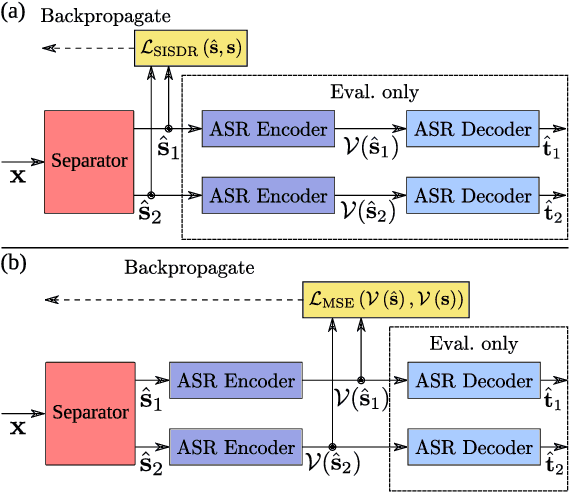


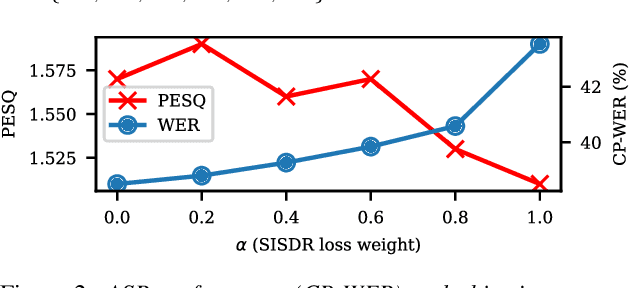
Abstract:One solution to automatic speech recognition (ASR) of overlapping speakers is to separate speech and then perform ASR on the separated signals. Commonly, the separator produces artefacts which often degrade ASR performance. Addressing this issue typically requires reference transcriptions to jointly train the separation and ASR networks. This is often not viable for training on real-world in-domain audio where reference transcript information is not always available. This paper proposes a transcription-free method for joint training using only audio signals. The proposed method uses embedding differences of pre-trained ASR encoders as a loss with a proposed modification to permutation invariant training (PIT) called guided PIT (GPIT). The method achieves a 6.4% improvement in word error rate (WER) measures over a signal-level loss and also shows enhancement improvements in perceptual measures such as short-time objective intelligibility (STOI).
Training Data Augmentation for Dysarthric Automatic Speech Recognition by Text-to-Dysarthric-Speech Synthesis
Jun 12, 2024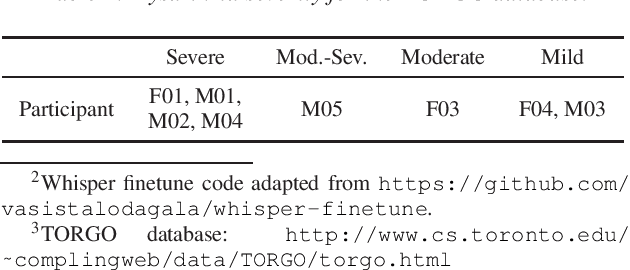
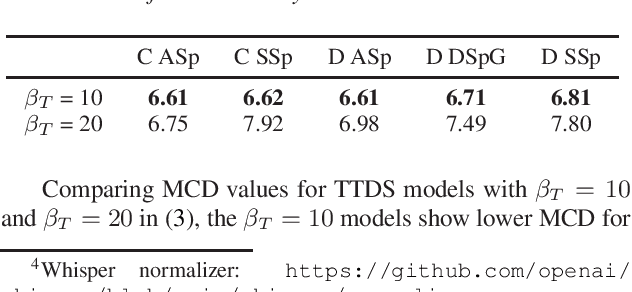


Abstract:Automatic speech recognition (ASR) research has achieved impressive performance in recent years and has significant potential for enabling access for people with dysarthria (PwD) in augmentative and alternative communication (AAC) and home environment systems. However, progress in dysarthric ASR (DASR) has been limited by high variability in dysarthric speech and limited public availability of dysarthric training data. This paper demonstrates that data augmentation using text-to-dysarthic-speech (TTDS) synthesis for finetuning large ASR models is effective for DASR. Specifically, diffusion-based text-to-speech (TTS) models can produce speech samples similar to dysarthric speech that can be used as additional training data for fine-tuning ASR foundation models, in this case Whisper. Results show improved synthesis metrics and ASR performance for the proposed multi-speaker diffusion-based TTDS data augmentation for ASR fine-tuning compared to current DASR baselines.
Hallucination in Perceptual Metric-Driven Speech Enhancement Networks
Mar 18, 2024



Abstract:Within the area of speech enhancement, there is an ongoing interest in the creation of neural systems which explicitly aim to improve the perceptual quality of the processed audio. In concert with this is the topic of non-intrusive (i.e. without clean reference) speech quality prediction, for which neural networks are trained to predict human-assigned quality labels directly from distorted audio. When combined, these areas allow for the creation of powerful new speech enhancement systems which can leverage large real-world datasets of distorted audio, by taking inference of a pre-trained speech quality predictor as the sole loss function of the speech enhancement system. This paper aims to identify a potential pitfall with this approach, namely hallucinations which are introduced by the enhancement system `tricking' the speech quality predictor.
Non-Intrusive Speech Intelligibility Prediction for Hearing-Impaired Users using Intermediate ASR Features and Human Memory Models
Jan 24, 2024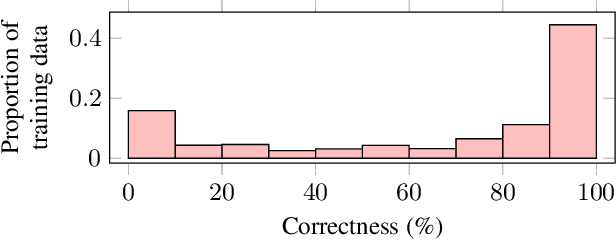

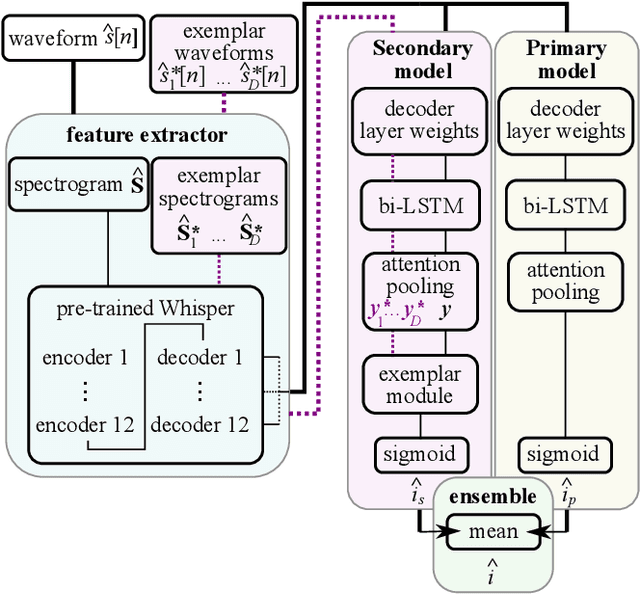
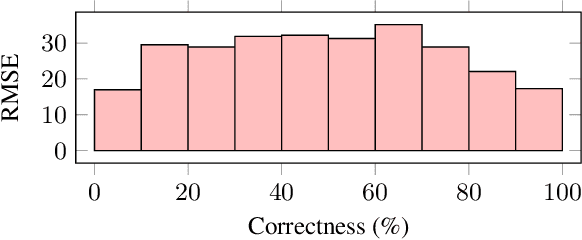
Abstract:Neural networks have been successfully used for non-intrusive speech intelligibility prediction. Recently, the use of feature representations sourced from intermediate layers of pre-trained self-supervised and weakly-supervised models has been found to be particularly useful for this task. This work combines the use of Whisper ASR decoder layer representations as neural network input features with an exemplar-based, psychologically motivated model of human memory to predict human intelligibility ratings for hearing-aid users. Substantial performance improvement over an established intrusive HASPI baseline system is found, including on enhancement systems and listeners unseen in the training data, with a root mean squared error of 25.3 compared with the baseline of 28.7.
Multi-CMGAN+/+: Leveraging Multi-Objective Speech Quality Metric Prediction for Speech Enhancement
Dec 14, 2023

Abstract:Neural network based approaches to speech enhancement have shown to be particularly powerful, being able to leverage a data-driven approach to result in a significant performance gain versus other approaches. Such approaches are reliant on artificially created labelled training data such that the neural model can be trained using intrusive loss functions which compare the output of the model with clean reference speech. Performance of such systems when enhancing real-world audio often suffers relative to their performance on simulated test data. In this work, a non-intrusive multi-metric prediction approach is introduced, wherein a model trained on artificial labelled data using inference of an adversarially trained metric prediction neural network. The proposed approach shows improved performance versus state-of-the-art systems on the recent CHiME-7 challenge \ac{UDASE} task evaluation sets.
On Time Domain Conformer Models for Monaural Speech Separation in Noisy Reverberant Acoustic Environments
Oct 09, 2023



Abstract:Speech separation remains an important topic for multi-speaker technology researchers. Convolution augmented transformers (conformers) have performed well for many speech processing tasks but have been under-researched for speech separation. Most recent state-of-the-art (SOTA) separation models have been time-domain audio separation networks (TasNets). A number of successful models have made use of dual-path (DP) networks which sequentially process local and global information. Time domain conformers (TD-Conformers) are an analogue of the DP approach in that they also process local and global context sequentially but have a different time complexity function. It is shown that for realistic shorter signal lengths, conformers are more efficient when controlling for feature dimension. Subsampling layers are proposed to further improve computational efficiency. The best TD-Conformer achieves 14.6 dB and 21.2 dB SISDR improvement on the WHAMR and WSJ0-2Mix benchmarks, respectively.
Non Intrusive Intelligibility Predictor for Hearing Impaired Individuals using Self Supervised Speech Representations
Jul 27, 2023



Abstract:Self-supervised speech representations (SSSRs) have been successfully applied to a number of speech-processing tasks, e.g. as feature extractor for speech quality (SQ) prediction, which is, in turn, relevant for assessment and training speech enhancement systems for users with normal or impaired hearing. However, exact knowledge of why and how quality-related information is encoded well in such representations remains poorly understood. In this work, techniques for non-intrusive prediction of SQ ratings are extended to the prediction of intelligibility for hearing-impaired users. It is found that self-supervised representations are useful as input features to non-intrusive prediction models, achieving competitive performance to more complex systems. A detailed analysis of the performance depending on Clarity Prediction Challenge 1 listeners and enhancement systems indicates that more data might be needed to allow generalisation to unknown systems and (hearing-impaired) individuals
The Effect of Spoken Language on Speech Enhancement using Self-Supervised Speech Representation Loss Functions
Jul 27, 2023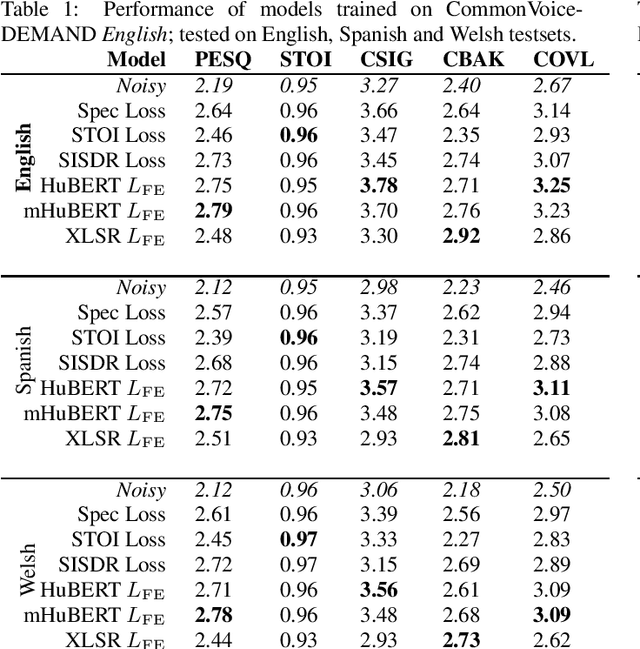
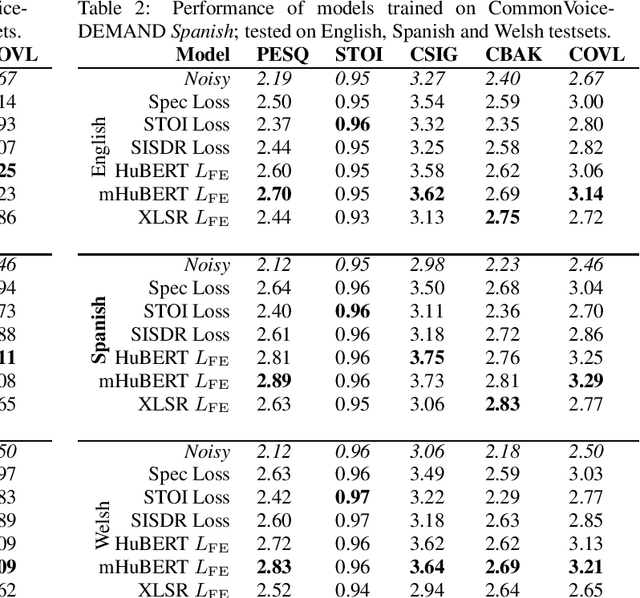
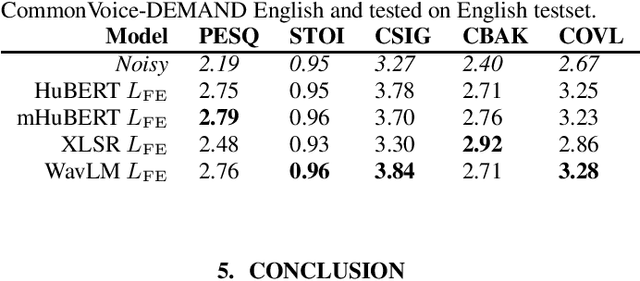
Abstract:Recent work in the field of speech enhancement (SE) has involved the use of self-supervised speech representations (SSSRs) as feature transformations in loss functions. However, in prior work, very little attention has been paid to the relationship between the language of the audio used to train the self-supervised representation and that used to train the SE system. Enhancement models trained using a loss function which incorporates a self-supervised representation that shares exactly the language of the noisy data used to train the SE system show better performance than those which do not match exactly. This may lead to enhancement systems which are language specific and as such do not generalise well to unseen languages, unlike models trained using traditional spectrogram or time domain loss functions. In this work, SE models are trained and tested on a number of different languages, with self-supervised representations which themselves are trained using different language combinations and with differing network structures as loss function representations. These models are then tested across unseen languages and their performances are analysed. It is found that the training language of the self-supervised representation appears to have a minor effect on enhancement performance, the amount of training data of a particular language, however, greatly affects performance.
 Add to Chrome
Add to Chrome Add to Firefox
Add to Firefox Add to Edge
Add to Edge